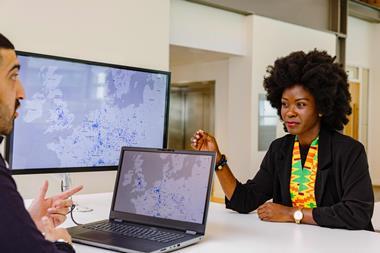 Silicon Valley will soon force a disruptive pace of change in the automotive sector and its supply chains, Scott Perry, chief technology and procurement officer at transport, logistics and supply chain management solutions provider Ryder, warned delegates at this week’s Supply Chain Conference in Atlanta.
Silicon Valley will soon force a disruptive pace of change in the automotive sector and its supply chains, Scott Perry, chief technology and procurement officer at transport, logistics and supply chain management solutions provider Ryder, warned delegates at this week’s Supply Chain Conference in Atlanta.
Stressing that the US technology hub saw the automotive industry as a “veritable playground”, Perry (pictured) told the conference on Tuesday: “They are looking at it as a smorgasbord of opportunity for disruption and how they can deploy new technology.
“There is no real consideration for how business is conducted, how relationships exist,” he added. “The focus is on how they can accelerate efficiency and innovation and eliminate inefficiency, doing so by connecting as many partners in the industry as possible.”
While this is positive from an efficiency standpoint, it could disrupt several-decade-old logistics networks, relationships and existing deployed technologies, he said.
Speaking in the same session, Sven Dharmani, principal, advisory services at Ernst & Young, said the auto industry was like to witness more change over the next 5 years than it had in the previous 20.
“The barriers for entry for new players in the market have changed,” commented Dharmani. “If I look back even 15 years ago, it would be very hard for a new player to enter the market. It is not the same any more. Faraday, Tesla, they have all changed the pattern.”
Perry also highlighted the number of startups and new entrants in the automotive sector and throughout the supply chain.
“We are seeing so many changes in so many areas, and every day there is a new development, a new announcement or a new entrant into the marketplace,” he said.
Among the big opportunities was the rise of connectivity, said Perry, who cited estimates that by 2020, there would be 34 billion connected devices around the world – the equivalent of around five per person.
“We are addicted to connected devices, we are addicted to the convenience of them and they are creating a tremendous amount of data and connectivity,” he noted.
From a transportation and logistics standpoint, Perry continued, this increased connectivity was creating a network that had never existed before but also an increase in visibility through the supply chain.
“That visibility is going to create a significant amount of transparency – and with that comes a significant degree of accountability,” said Perry.





































